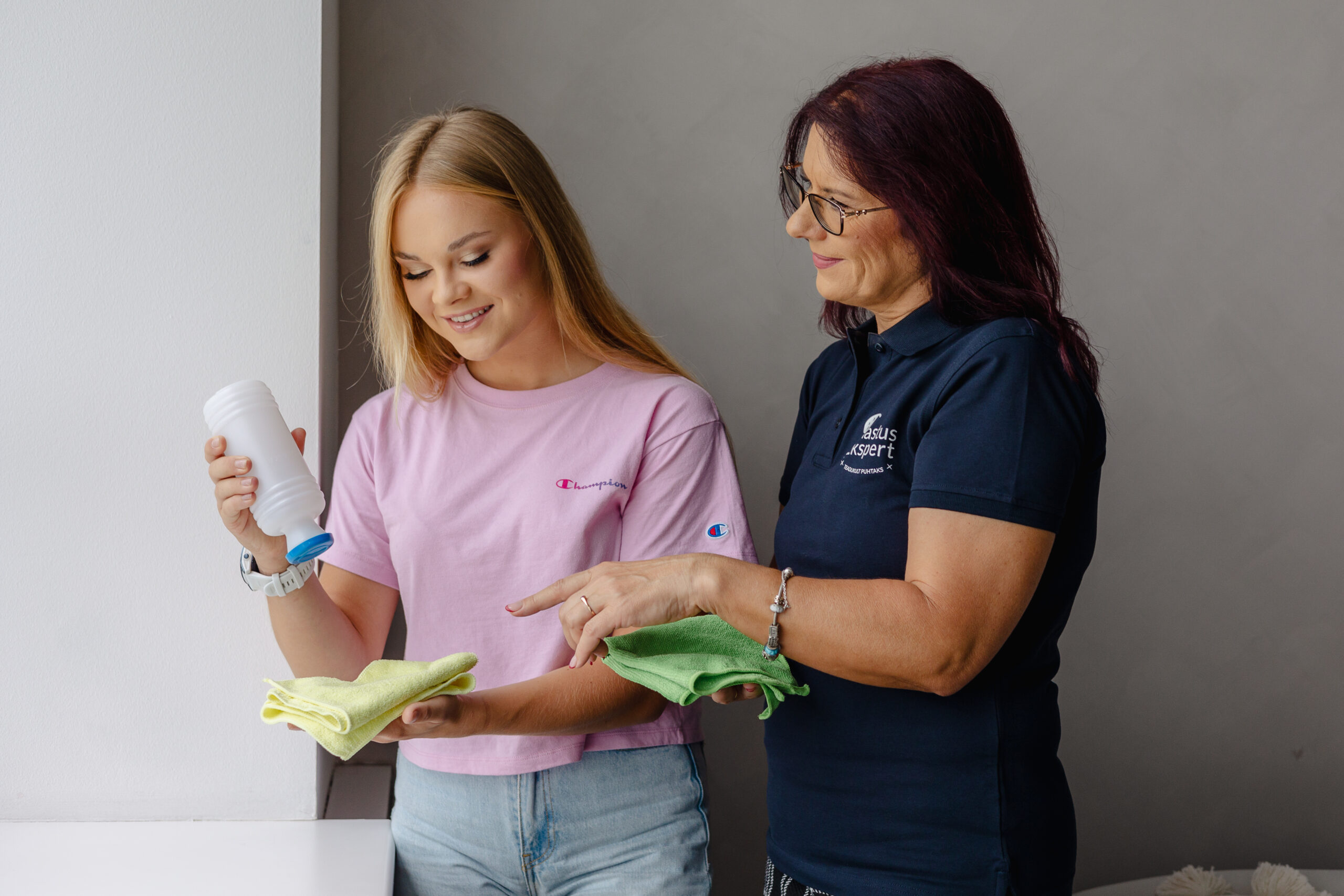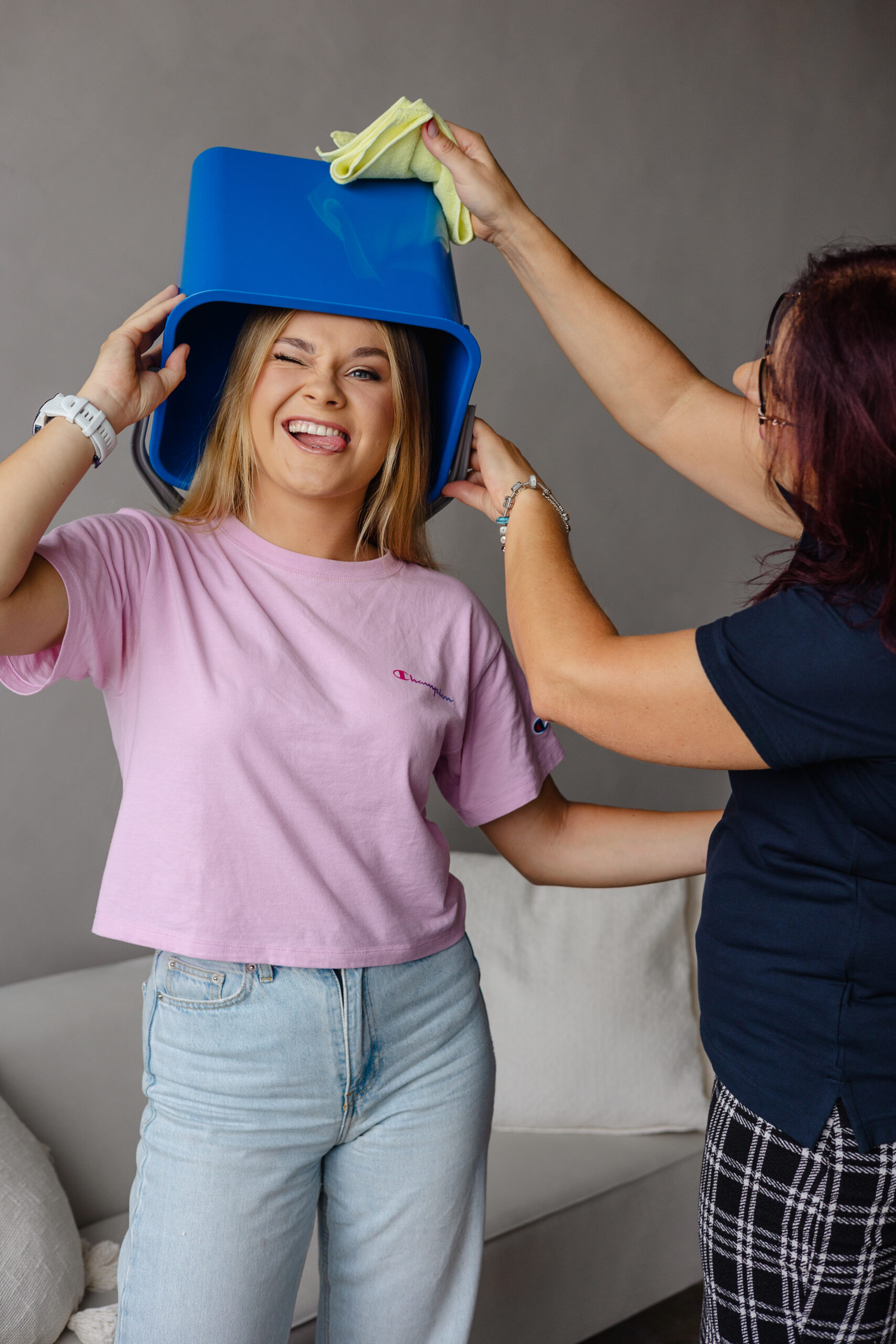info@puhastusekspert.ee +372 5611 1048
Young People’s House Cleaning Habits in Estonia
 Cleaning is a topic that concerns all people. Someone has to clean all the rooms – at home, in the workplace, in school and in public spaces. This requires time, cleaning products and equipment. Cleaning and the achieved cleanliness have a direct effect on people’s health, for both those who clean and those who use the rooms. Cleaning can be good for health and performance, but it can also be detrimental. This depends on how you clean, i.e. your knowledgeability.
Cleaning is a topic that concerns all people. Someone has to clean all the rooms – at home, in the workplace, in school and in public spaces. This requires time, cleaning products and equipment. Cleaning and the achieved cleanliness have a direct effect on people’s health, for both those who clean and those who use the rooms. Cleaning can be good for health and performance, but it can also be detrimental. This depends on how you clean, i.e. your knowledgeability.
For her high school research paper, in 2023/2024 Maria Liis Alt conducted a survey about the house cleaning habits of 14-19-year-old Estonians to determine what can be done to make cleaning easy and ensure it has a positive effect on your health. 476 young people responded to the questionnaire. She also read researches about house cleaning from different countries. A practical experiment where three families cleaned their houses according to provided instructions was also carried out.
Many authors (Gordon, Sherry; Dr Bösenkopf’s comment in a study by Kärcher) have pointed out the effect cleaning has on health which can be summarised as follows:
- cleaning is relaxing, it relieves stress, people can focus better in a clean environment
- in a clean environment people get sick less
- cleaning as a physical activity has a positive effect on physical health
A study conducted in Germany in 2022 showed that 78% of people felt relaxed after cleaning. Additionally, many sources point out that messiness increases stress, makes people slower and causes both mental and physical exhaustion.
A summary of the survey conducted in Estonia
Based on the responses of the 476 young people, we can conclude the following:
- There is no fixed day for house cleaning; cleaning is done on an ongoing basis, where something is done every day.
- Almost all young people (98%) are involved in house cleaning. No differences were observed between boys and girl.
- Contact surfaces that do not appear dirty are not considered dirty and, therefore, are not cleaned.
- 79% of homes have too many cleaning chemicals.
- Over 70% use microfiber cloth to clean.
- 79% of homes use a brush or vacuum cleaner to remove dust and dry loose dirt. When cleaning hard floors like this a considerable amount of dust rises into the air, and it is a time-consuming cleaning method.
- 57% of homes have a floor cleaning bucket and wash their floors. This indicated overly wet methods which cause a layer, or dirt, to build up on surfaces.
- 96% of responders have dishwashing sponges. Few people use brushes to wash their dishes. Sponges are an unhygienic and environmentally damaging way to wash dishes.
- 80% get knowledge on cleaning from their parents. Families have the chance to learn together.
The results of the survey conducted in Estonia were, in many aspects, similar to the results of the international survey conducted by Kärcher in 2019, in which 11,000 people participated.
Conclusions and recommendations

The main goal of the research was to provide easy recommendations that help make house cleaning easy, fast and health-promoting. After analysing the results of the study and reviewing various studies and the experience of Puhastusekspert, it is recommended to make the following changes:
- Cleaning should be planned better and divided between different people more clearly. For example, doing some small task every day: cleaning contact surfaces on Monday, dusting on Tuesday, etc.
- People use too many cleaning products. Cleaning agents are actually required for dish washing, cleaning the toilet and removing limescale (if it occurs). Most dirt can be removed with a moisted microfiber cloth.
- Spray bottles are widely used. Using them while cleaning is detrimental to your health in multiple ways. Instead of a spray bottle, you should use a moisting bottle when using cleaning products in the toilet, for example.
- Knowledgeable use of a microfiber cloth is very important – folding the cloth and adequate dampness. This way you can remove most of the dirt. Appropriate dampness is of key importance. If the cloth is too wet, it will just move the dirt around. Wetting the cloth before cleaning is recommended.
- Noticing and cleaning contact surfaces using a damp microfiber cloth will create a healthier environment.
- When removing dust and dry loose dirt from the floor, people often use vacuums and brushes, but this blows the dust into the air. Using a floor squeegee is more effective. Even using disposable cloth is more appropriate.
- Floors are washed excessively. Instead, they should be cleaned with damp microfiber cloth, depending on the level of dirt being removed.
- The use of dishwashing sponges is unhygienic. They should be replaced with dish brushes, preferably ones developed for the food industry. Dishwashing brushes can also be effectively used to clean other surfaces such as the sink, drain or sneakers. It is important to use different brushes for different tasks.
The above recommendations were also given to the survey participants and they were asked to clean in this new way for a month. The results of the experiment can be summarised as follows:
- Cleaning time decreased significantly. Before the experiment, it took around 5-8 hours a week to clean the house, after the experiment it took around an hour a week. It is important to consider that only 3 families participated in the experiment, and we cannot make generalisations based on their experience. If we rely on Puhastusekspert’s experience, the average family spends 4 hours per week on cleaning. If cleaning is done in a knowledgeable way, the average cleaning time is reduced to 2.5 hours per week and the result is also better.
- Before the experiment, homes had 6 or more cleaning agents, which were in spray bottles. After the experiment, they had 1-3 cleaning agents and no spray bottles. The benefits of this were pointed out.
- Before the experiment, vacuums were used 1-3 times every week. As a result of the experiment, vacuum use declined significantly, and using a squeegee to clean hard floors gave a better result in a shorter time.
- The greatest difference was seen in how microfiber cloth was used – the cloth was dampened before cleaning according to the given instructions and it was folded.
- It was found that changing cleaning methods is actually easy and has a big impact.
To summarise the survey and the theoretical material, it can be said that it is important to be knowledgeable about cleaning at a young age. Commercials often steer people the wrong way. If a young person changes their cleaning habits, it is possible to decrease the time they spend cleaning in their life by 5000 hours, given that their life expectancy is at least 80. At the same time, knowledgeable cleaning promotes health. Habitual cleaning is likely to be time-consuming, low in efficiency and harmful to health. Knowledgeable cleaning achieves cleanliness quickly and easily, is good for your health and has a therapeutic effect.
Additional material:
- Cleaning handbook, e-book: https://puhastusekspert.ee/en/e-book-handbook-on-cleaning/
- Educational films about cleaning ergonomics: https://ergoclean.eu/
- Cleaning recommendations: https://pandemicclean.eu/